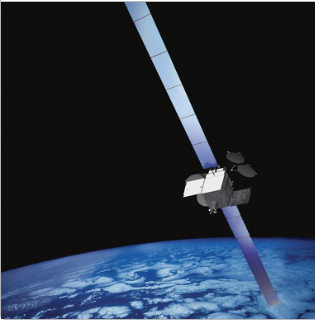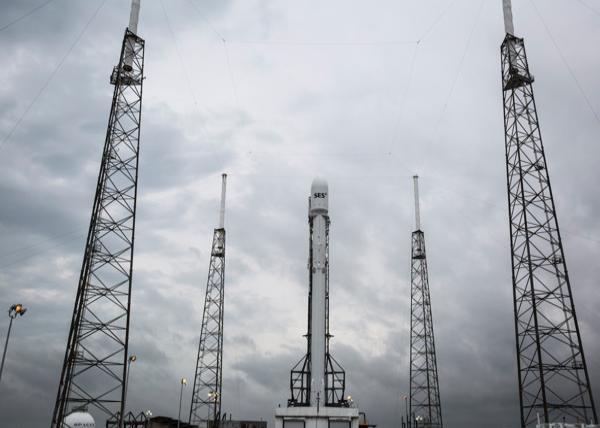
SES-9 will be positioned at the orbital slot of 108.2 degrees E and provide incremental as well as replacement capacity to the well established slot over Asia, where it will be co-located with the existing satellites. The satellite will expand SES’s capability to provide DTH broadcasting and other communications services in Northeast Asia, South Asia and Indonesia, as well as maritime communications for vessels in the Indian Ocean.
[Satnews] Thursday's update to previous Thursday's update...
SpaceX
Launch update
Countdown held for the day. Teams are reviewing the data and next available launch date.
The Falcon 9 remains healthy in advance of SpaceX and SES’s mission to deliver the SES-9 satellite to Geostationary Transfer Orbit. Out of an abundance of caution, the team opted to hold launch for today to ensure liquid oxygen temperatures are as cold as possible in an effort to maximize performance of the vehicle. SpaceX is now targeting tomorrow, Thursday February 25, at 6:46pm ET for launch of SES-9.
The launch of the SES-9 satellite on the SpaceX Falcon 9 rocket from Cape Canaveral's Air Force Station, Florida has been delayed.
SpaceX has provided an official reason for today's delay: "Out of an abundance of caution, the team opted to hold launch for today to ensure liquid oxygen temperatures are as cold as possible in an effort to maximize performance of the vehicle."
SpaceX announced on Wednesday that it will attempt another sea landing with its reusable Falcon 9 rocket after delivering the SES-9 commercial telecommunications satellite into orbit. The SES-9 will enter geosynchronous orbit and drastically expand the capacity throughout the Asia-Pacific region. This marks SpaceX's fourth attempt at a sea landing.
Once the launch occurs the following timetable will take place...
The spacecraft will be deployed approximately 31 minutes after lift-off. SES-9 will use a chemical bi-propellant thruster to complete major post-launch maneuvers.

Weather watch as clouds gather.
An electric propulsion system will complete the journey to its orbit at 36,000 kilometers above the Equator. The on-orbit maneuvering throughout the 15 year nominal lifetime of the satellite will be done by electric propulsion.
SES-9 is SES’s largest satellite to serve the Asia-Pacific region. It will provide significant expansion capacity to serve the fast-growing video, enterprise, mobility and government sectors across Northeast Asia, South Asia, India, Indonesia and the Philippines.
SES-9 will be co-located with another SES satellite, SES-7, at the prime orbital location of 108.2 degrees East, and will replace the NSS-11 spacecraft at that position. SES-9 was built by Boeing Satellite Systems International.

